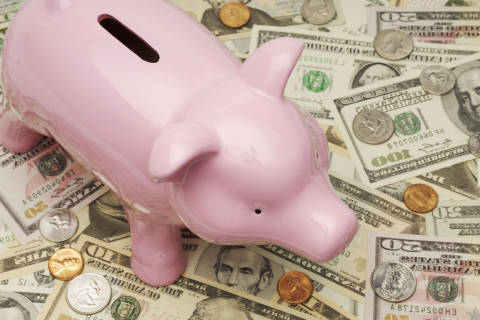An early December survey from U.S. News & World Report shows that more than eight in 10 Americans who have credit card debt are experiencing anywhere from a little to a lot of anxiety about it.
Survey Highlights (All Respondents Have Credit Card Debt)
— Nearly 31% have at least $6,000 of credit card debt. And 15.1% have credit card debt of $10,000 or more.
— A majority — 51.2% — have seen an increase in credit card debt in 2022.
— The most common reason given for credit card debt? The combination of rising costs and insufficient income. The second most common choice was unexpected expenses.
— Only 19% of respondents have transferred their debt to a balance transfer credit card, which would allow them to pay off debt with a 0% annual percentage rate.
— An overwhelming majority express some degree of stress about credit card debt — from a little bit (33.1%) to a medium amount (27%) to a lot (21.5%).
[Read: Best Credit Cards.]
How Much Credit Card Debt Do Americans Have?
It’s not surprising that survey respondents are worried about their debt. More than 15% of respondents say they have debt of at least $10,000.
Survey respondents were asked how much they debt they have. Here are the findings:
— $1,999 or less: 35.3%.
— $2,000 to $3,999: 20.3%.
— $4,000 to $5,999: 13.6%.
— $6,000 to $7,999: 9%.
— $8,000 to $9,999: 6.7%.
— $10,000 or more: 15.1%.
Main Reasons for Getting Into Debt
Although credit card debt is sometimes due to multiple factors, there’s usually one circumstance that stands out as the catalyst. And once you start carrying a balance from month to month, it can be difficult to get your finances back on track.
Survey respondents were asked to share the main reason they were in debt, and here’s what they reported:
— Increased costs coupled with insufficient income: 23.6%.
— Unexpected expenses: 20.1%.
— Medical emergency: 12.1%.
— Car repairs: 10.6%.
— Retail therapy/impulse spending: 9.9%.
— Job loss: 9.6%.
— Divorce: 2.6%.
Almost a quarter of respondents cite the challenge of affording high prices. During times of inflation, salary increases may not keep pace with inflation. This discrepancy can create a serious cash flow problem that often results in debt.
[Read: Best Balance Transfer Cards]
How to Get Rid of Your Debt for Good
Carrying credit card debt can be difficult to control due to compound interest. If you only make minimum monthly payments on your credit cards, it could take you several years to pay off your balance.
Since credit card debt is considered toxic, survey respondents were asked if they knew how compound interest worked. Here are the results:
— Just over 52% of respondents chose the correct answer: The amount you owe grows larger each month that you carry debt.
— Almost 17% say that compound interest doesn’t apply to credit cards.
— About 14% say it means your balance stays the same each month.
— More than 17% admit that they don’t know how compound interest works.
While it’s great that a slim majority understand how damaging compound interest can be, about 48% of respondents don’t know how it works. Understanding how credit card interest works could serve as a major deterrent.
There are many ways to get out of debt. Whichever debt-reduction method you choose, it needs to start with a budget to be successful.
Create a Budget and Stick to It
Only 29.3% of survey respondents say they stick to a budget. Around 55% say they have a budget, but only sometimes or rarely stick to it. Nearly 16% say they have no budget at all.
Once you’re out of debt, you’ll need to set up a revised budget that reflects your new debt-free life. That’s how you avoid getting into credit card debt again.
Balance Transfer Credit Card
With a balance transfer credit card, you get a 0% introductory APR for a period, usually between 12 and 21 months. The downside is that it requires a good credit score and there’s usually a transfer fee, which ranges from 3% to 5%. But even with the fee, you’re still likely to save a lot of money since you won’t be paying interest during the introductory period.
Insider Tip: U.S. News just launched the 2023 Annual Credit Card Awards. This year’s editor’s choice award is for the Best Credit Card for Defeating Debt: Wells Fargo Reflect Card. It’s a balance transfer card with a lengthy 0% introductory APR.
Debt Consolidation Loan
If you don’t have a high enough credit score to get a balance transfer credit card, then a debt consolidation loan might work. You won’t get a 0% APR, but you’ll probably get an interest rate that’s lower than what you’re paying on your credit cards right now.
And since credit card interest rates have risen due to increases in the prime rate, it’s a good bet that you’ll get a much lower rate on a personal loan.
Do-It-Yourself Strategies
If you can’t get approved for a balance transfer credit card and debt consolidation isn’t an option, there are three DYI strategies that could work for you. More than 43% of respondents say they haven’t tried one of these strategies. But of those who have used a DIY strategy, here is the breakdown by method:
— Debt snowball: 43.5%.
— Debt avalanche: 31.1%.
— Debt blizzard: 25.4%.
It’s important to choose the strategy that you feel comfortable with. Once you start paying down your debt, you’ll feel a huge sense of relief.
[Read: Best 0% APR Credit Cards.]
Debt Avalanche Method
List your credit cards from the highest interest rate down to the lowest rate. Your focus is on the first card. Pay more than the minimum amount each month. When that’s paid off, you start on the second card on your list. Work your way through the list until you’re debt-free.
Upside: You pay less interest because you pay off balances with the highest APRs first.
Downside: If the first card on your list has a large balance, it takes discipline and perseverance to keep going.
Debt Snowball Method
List your credit cards from the smallest balance to the largest balance. Again, your focus is on the first card. Pay more than the minimum each month. When that’s paid off, you start on the second credit card on your list. Repeat until you’re debt-free.
Upside: You’ll get a quick win because you’re focused on the smallest balance first. The idea is that the adrenaline rush motivates you to keep going.
Downside: You pay a lot more in interest this way, especially if the last credit card balance on your list has a high APR.
Debt Blizzard Method
This DIY approach is my own concoction. Many years ago, I was in debt and used this strategy. You start with the snowball method to get a quick win. So, the first balance you tackle is the smallest one.
Then, you switch to the avalanche method. Now list your remaining credit cards from the highest interest rate to the lowest rate. Work your way down the rest of the list until the account with the lowest interest rate is paid off.
Upside: You’ll get an emotional boost at the start by paying off the smallest balance. But then you also get the advantage of paying less interest after you switch to avalanche.
Downside: Once you switch to avalanche, it requires self-motivation to stick with it.
If you feel you’re in so much debt that you can’t imagine any of these strategies working for you, then consider credit counseling.
Credit Counseling Can Help
Debt can happen to anyone, and there’s no shame in reaching out for help. You can find an accredited credit counseling agency via the National Foundation for Credit Counseling. And if you’re worried about credit counseling showing up on your credit report, you don’t need to be. Making contact and having a conversation with a counselor won’t be on your credit report, and it won’t lower your credit score. Now, if you decide to go into a debt management plan or declare bankruptcy, that can lower your score.
But right now, the most important thing is to stop your debt from growing and reclaim your financial freedom. With a little time, your score will bounce back, and you’ll be on the road to good credit again.
More from U.S. News
How to Consolidate Credit Card Debt
How to Calculate Credit Card Interest
Survey: Nearly 82% Worry About Their Credit Card Debt originally appeared on usnews.com







